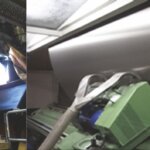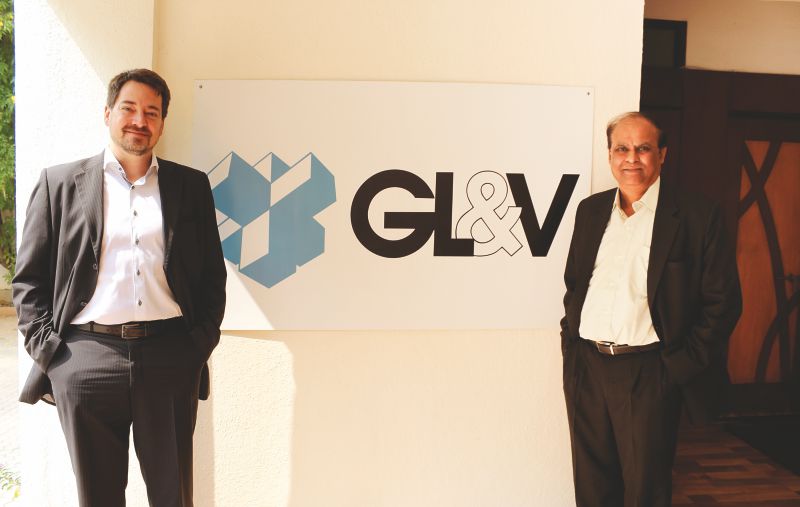
The company in the past has successfully acquired many breakthrough technologies in the area of pulp and paper production and has been at the fore front of various low-cost, high-outcome solutions. Set to open its third facility in India, GL&V has some really powerful solutions lined for the Indian pulp and paper industry.
Canada based GL&V Pulp and Paper Group designs and markets equipment used in various stages of pulp and paper production, from pulp preparation to sheet forming and finishing. With numerous locations in Canada, Sweden, US, and India, GL&V serves the global market with capital equipment as well as spare parts, rebuilds, upgrades and optimization services for new and existing equipment.
With the start of its first manufacturing facility in 2008 near Pune, the company has seen continuous growth of its Indian operations, so much so that it opened its second factory in 2014 near the first one. GL&V’s utmost focus on resource-conservation, continuous R&D, and global mix of talent makes it rather a rare company to churn out highly customized and cost-effective solutions for the Indian pulp and paper Industry. Paper Mart recently held a joint interaction with Mr. Louis Guindon (President and Chief Financial Officer, GL&V) & Mr. Abhay Warhadpande (Managing Director, GL&V India Pvt Ltd) to know more about the company’s Indian ambitions. Excerpts:
Tell us in brief about GL&V as a global company?
Louis Guindon: Founded 40 years ago, it’s probably the longest-standing Canadian company serving the pulp and paper industry. The original founder Mr. Laurent Verreault still owns the company with his son Mr. Richard Verreault. Today, the company has over 600 employees globally – 125 here at the single facility in India, over 100 employees in Canada (1 location), over 100 in Sweden (3 locations), and then in US we have 3 locations with over 150 employees. With sales representatives in numerous countries, we have operations in 15 countries globally. Our products are sold in 40 countries. GL&V is truly a global and diversified company.
GL&V covers three major segments, viz. chemical pulping, stock preparation and paper making. All the segments are geographically diversified and have helped us serve various virtual business cycles. The company has gone through acquisitions over the years – some of the major ones are Celleco and Hedemora in the field of cleaners and disc filters, Beloit’s chemical pulping, stock preparation and rewinder businesses and Kvaerner’s Compact Press® based chemical fibre line technology. Our business model is based on low-cost sourcing from various countries, wherein we outsource our major operations to countries like India to get outstanding quality at low costs. Our facility here in Pune confirms that business model and the operations in India have grown tremendously over years, from a small shop initially to two shops now.
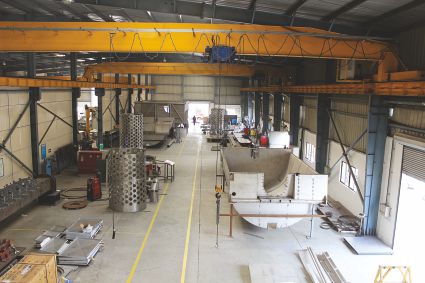
Our annual revenues are approximately USD 200 million which is very profitable and it has always been profitable throughout the cycle, starting from the inception of the company till this last September. The 12 months period completed on September 30 has been a very good year in our history with the company recording its best profit. We work with large banks in Canada and US and, considering the balance sheets, we are well-positioned to continue growing and investing, either in acquisitions or technologies. In general, most of our funds go into innovation and research.
Kindly elaborate more on your Indian operations as to how it began and what made you choose India as a site for your operations.
Abhay Warhadpande: The reason for choosing India is that we have world-class competency in terms of work, production and engineering at lower costs and language is no more a barrier as everyone understands English here. I think the only barrier or challenge is the time zones, but again, between India, Sweden, USA and Canada it works well with real time tools which allow us to share pretty much on 24-hour basis.
In 1999, GL&V started its first operation in India as a liaison office for its Swedish outfit called GL&V Celleco AB at the time. Afterwards, in 2005, we established this company, GL&V India as a 100 percent subsidiary of GL&V Canada. We set up our first manufacturing unit in 2008 in Pune. In 2014, we constructed another shop equipped with modern machine tools like Horizontal Boring Machine and Vertical Turning Lathe which are special purpose machines. This was built to accommodate rapidly growing demands on account of quality of engineering and world-class manufacturing. Currently, we have two shops and are set for the third, coming up in 6 months’ time. After the third shop becomes operational, we will shut down the oldest one. Working with 125 people, we are about to add another horizontal boring machine and an engineering lathe. The Sales & Projects team in India is covering both the domestic market as well as some countries in South East Asia, Africa and the Middle East.
As per your company’s claims, your products are designed and engineered to conserve resources, water, chemical, energy, etc resulting finally in cost saving too. How do you do that as it is one very important aspect for a resource-intensive industry like the pulp and paper?
LG: As you know GL&V invests hugely in acquiring technology as may be apparent from the list of acquisitions that we have done. What do you think we have in mind while acquiring these fully-functioning technologies? Of course, the aspects that you mentioned, viz. energy cost, power consumption, chemical consumption, fiber return, safety and time, etc. These parameters are at core of everything we do.
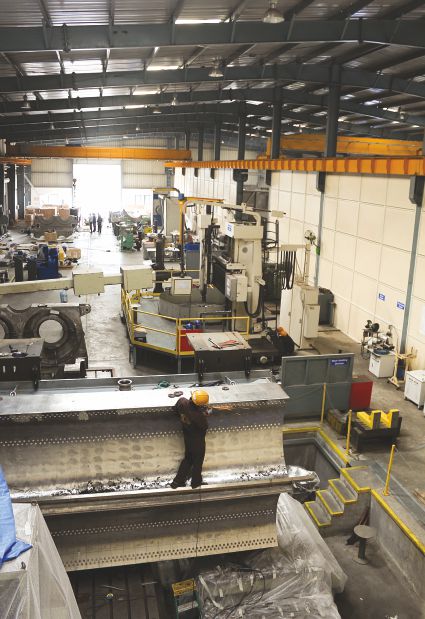
Among the latest transactions we have done, one is the acquisition of the Finnish company Tam Pulping Oy specializing in OCC recycling systems as well as pulping and screening technology. The backbone of this acquisition was the fact that these technologies are designed for significant energy savings. Likewise, our entire portfolio is oriented to the aspect for ample resource savings.
AW: Tam Pulping’s offerings help you save lots of energy because you are eliminating some undesirable equipment in the OCC recycling fiber line, or waste paper line; that gives you substantial benefit on power saving front. In addition to that, our core products, for which GL&V is known worldwide, like screens, disc filters, cleaners, washers are based on constant research and development over the years keeping these saving and efficiency parameters in view. One particular product that I would like to mention here is equipment called Celleco Twister which operates at twice the consistency of a normal centric cleaner. It therefore gives same cleaning efficiency, but you can save almost 50 percent electricity or power as it operates at higher consistency.
Please elaborate on how these saving features of a technology or equipment help meet your customers’ bottom line.
LG: Paper mills now more and more perceive these features as a business case. So, it’s not just the upfront cost of the equipment, but it’s rather the cost in addition to the savings to be accrued in future with the help of the equipment. When you put everything together, it becomes an actual business case.
AW: I would like to add to this. You know GL&V always makes sure that it maintains a portfolio of its products which will help customer to improve his quality and reduce power cost or cut fiber loss. Our major focus remains on rebuilding and upgrading the existing equipment and at the same time developing new products with an aim to minimize power consumption to help customers improve their quality. In Indian context, in addition to power saving, another important thing is environmental issues. We have certain technologies particularly in Indian context like oxygen delignification, elemental chlorine-free (ECF) bleaching, etc. which address these environmental concerns.
We are doing quite a few things in India. As we are aware, the big mills with forest-based raw material have already gone in for oxygen delignification. Now the second segment which uses agro-residues like straw and bagasse, are also going in for this technology. This technology has good potential in India wherein we are focusing and helping the industry in that segment to reduce AOx levels in the effluent.
Share with us your product offerings for the pulp and paper industry. Is there any new addition?
AW: Currently, the major products that we have are centricleaners, disc filters, pulp washers, compact (twin roll) presses, refiners, screens, MC pumps, agitators, headboxes and rewinders. As mentioned by Louis, the new addition is the Tam Pulping technology. We have now two complete systems working in Europe and Brazil with full customer satisfaction. We are aggressively pursuing the area of OCC which has good potential in India as packaging boards and kraft grades will see huge growth in demand in times to come. This demand growth is directly proportional to the economy.
Another area on which a lot of R&D is going on is a technology known as nano fiber technology. On this, we are working jointly with University of Maine, USA and have set-up some Pilot plants. We are now waiting for the results, soon after which we will be launching the technology on commercial scale. This would be a breakthrough technology for the pulp and paper industry.
LG: Regarding nano technology, things are happening more outside than in the traditional pulp and paper industry as far as applications are concerned. The nano fiber technology will take our portfolio to a whole new level. By initiating the research in the technology, I think, we are slightly ahead of the curve in providing solutions to the pulp and paper industry. We are quite excited about the technology.
Tell us about the existing two facilities and the new facility that you are about to build. Can you share the total investment in India so far?
AW: We have one facility located in a place called Dhanore, close to Pune. It is 30,000 square feet in area with three bays. In addition to regular welding, fabrication, and assembly, we have special purpose Poreba lathe machine which is used for machining chemical pulp washers and achieving very close tolerances which are very important in the operation of a pulp washer. This can machine washers of 4 meter diameter and 12 meter length. Perhaps the biggest washers can be made on it.
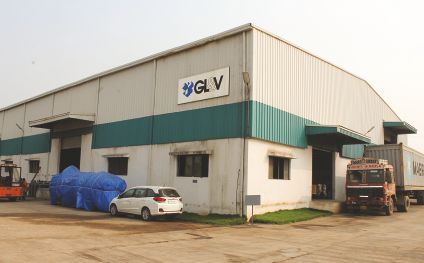
Then second shop is located at Markel, 4 km away from the old shop. There again we have 30,000 square feet of shed. Here we have large-sized two-bed horizontal boring machine and a vertical turning lathe along with some other CNC machines. So, the equipment like refiners, screens, presses and washer drums are done in-house. Also, the machining and critical operations are done in-house so that we have tight control over quality.
Well, as I mentioned earlier, the third shop is coming up adjacent to the existing shop that is at Markel and that would again be of almost same area. We will be adding a few more machines in it like an engine lathe, a horizontal boring machine and special fixtures for compact press and disc filter manufacture. Poreba lathe machine will be shifted from the old shop to the new facility so that we can operate both the units as a single composite shop.
As for investments, we invested around USD 3 million, three years ago. The company is planning to invest another USD 2 million for the expansion in the coming year.
Brief us about the R&D side of your company including major objectives, developments, and areas of focus
LG: Certainly, as you bring up the point, we would say our R&D initiatives originate essentially from our close interaction with customers, wherein we learn a lot about their specific operational challenges and try to address them through our R&D efforts. We have actually built-up an intricate process based upon international standards and SIT process, where the ideas generated from customer’s needs are accommodated into R&D process. After that we use the combination of our own people. We have a dedicated R&D team of four people and a dedicated R&D lab in Tumba, Sweden.
Then, we also do some research in US and Canada, depending upon the technologies that have been tested. We set apart a budget every year for R&D activities and we do this annually as the owners of the company are very much in favor of this annual R&D process. Also, we try to protect every quality technology through patents and we have a very broad portfolio of patents that have been developed by us over the years.
AW: As you know, the paper industry is typical in a sense that technologies are unique to the raw material used, i.e. technology built for one raw material will not work for another. For instance, a technology which is made for forest-based hard-wood or soft-wood need not necessarily work on agro-residue or on recycled fiber. Agro-residue, in particular, is a fiber typical to India or South-Asia. Although we have established technologies in the field of pulping, stock preparation and paper making on forest-based raw material, we undertake serious R&D work on raw materials used in India, especially agro-residues, before we offer the technology to our Indian customers. We collect samples here and send them to our R&D labs in North America or in Sweden to test and see how the fiber behaves and whether any adjustment needs to be done to suit this particular raw material. This is a major part of our activity before we conclude any order.
What would be the consumption trend for the pulp and paper industry in India in times to come? What’s your view on the mindset of the Indian pulp and paper industry regarding the adoption of newer, efficient technology?
AW: In India, demand and consumption will keep growing. I expect by the year 2020, the consumption or the Indian pulp and paper production would be around 20 million tonne.
In India, adaptability to new technology varies from mill to mill; there are three classes of mills – A-grade, B-grade and C-grade mills. In A-grade mills, adaptability is optimum; most of the technologies have already been implemented in these mills. We offer services to such mills in the field of our expertise so that they can enhance these technologies even further. Then, we have B-grade mills which are a mix as some of them have implemented and some are in the process of implementing latest technologies. They are graduating towards A-grade mills and I think this segment or class of mills has tremendous potential to improve technology and compete with others. C-grade mills are essentially based on recycled fiber with capacities ranging from 10-60 tonne per day. A lot of such mills wish to adapt to newer, efficient technologies and graduate to second category but have cost constraints. We have certain equipment like centricleaners which can easily fit into their budget and help them improve their quality.
How do you educate your customers about the potential benefits of a technology and how to get maximum operational efficiency?
AW: We thoroughly educate our customers about a technology and its probable outcomes. Our company usually creates strong references in the form of mills where we supply our technology and work closely with them in optimizing its operational benefits through instructions, training and supervision. These references then spread the technology and its advantages through word of mouth to other customers.
LG: I would like to add that GL&V India enjoys being a part of global operations. So, our employees here in India can learn from other dealings that we have, either in Europe or North America, to assess how they approach their clients and so on. But, one thing that I would say is that we are adopters of India; we got inherently to India and have invested in something that we believed in. In that sense, we are long-term investors in India. The second shop in Markel is a testament of what I just said. It will become very interesting hub to address other markets in Asia as well. We could operate more efficiently through here. Or, maybe, it’s because of proximity or culture that we want to expand more.
Anything else that you would like to add to this conversation?
AW: Yeah, as Louis mentioned about the commitment to India, I would like to share some of the challenges here to catch up with the western standards, especially in terms of their way of working, quality commitments, sticking to delivery schedules etc. We have come up quite well so far, but there is still some gap. As far as quality is concerned, we are already at par because of the regular support and control from the engineers in US, Canada and Sweden. At any point of time, you will find some inspector here checking the quality. We make sure that 100 percent of any job is inspected and without inspection nothing leaves the factory. It may not be out of place to mention here that quality experts from International Paper (IP), USA audited our shops and approved them for manufacturing equipment for their mills worldwide. We are now regularly supplying them GL&V products produced in India.
Another important thing is to meet the delivery schedule that we commit. Although we are doing everything from our end, but in India you have to depend on several external factors like road condition, traffic jams which can affect movement of raw materials, bought-out components, finished products etc. and result in delays. That is one area we, as Indians, need to address.
LG: I think it is very great to have our North American or European customers visit the site here and be surprised by the quality that we produce here; that is a testament of hard work on everyone’s part. We are proud of these operations here in India.


